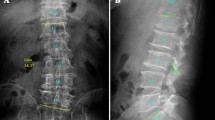Abstract
Many years after its initial description, paratonia remains a poorly understood concept. It is described as the inability to relax muscles during muscle tone assessment with the subject involuntary facilitating or opposing the examiner. Although related to cognitive impairment and frontal lobe function, the underlying mechanisms have not been clarified. Moreover, criteria to distinguish oppositional paratonia from parkinsonian rigidity or spasticity are not yet available. Paratonia is very frequently encountered in clinical practice and only semi-quantitative rating scales are available. The purpose of this study is to assess the feasibility of a quantitative measure of paratonia using surface electromyography. Paratonia was elicited by performing consecutive metronome-synchronized continuous and discontinuous elbow movements in a group of paratonic patients with cognitive impairment. Goniometric and electromyographic recordings were performed on biceps and triceps brachii muscles. Facilitatory (mitgehen) and oppositional (gegenhalten) paratonia could be recorded on both muscles. After normalization with voluntary maximal contraction, biceps showed higher paratonia than triceps. Facilitatory paratonia was higher than oppositional on the biceps. Movement repetition induced increased paratonic burst amplitude only when flexion and extension movements were performed continuously. Both facilitatory and oppositional paratonia increased with movement repetition. Only oppositional paratonia increased following faster movements. This is the first study providing a quantitative and objective characterization of paratonia using electromyography. Unlike parkinsonian rigidity, oppositional paratonia increases with velocity and with consecutive movement repetition. Like spasticity, oppositional paratonia is velocity-dependent, but different from spasticity, it increases during movement repetition instead of decreasing. A quantitative measure of paratonia could help better understanding its pathophysiology and could be used for research purposes on cognitive impairment.





Similar content being viewed by others
References
AL-Zamil ZM, Hassan N, Hassan W (1995) Reduction of elbow flexor and extensor spasticity following muscle stretch. Neurorehabil Neural Repair 9:161–165. doi:10.1177/154596839500900305
Bennett HP, Corbett AJ, Gaden S et al (2002) Subcortical vascular disease and functional decline: a 6-year predictor study. J Am Geriatr Soc 50:1969–1977
Beversdorf DQ, Heilman KM (1998) Facilitory paratonia and frontal lobe functioning. Neurology 51:968–971
Blanc Y, Dimanico U (2010) Electrode placement in surface electromyography (sEMG) “Minimal Crosstalk Area” (MCA). Open Rehabil J 3:110–126. doi:10.2174/1874943701003010110
Brouwer B, Hopkins-Rosseel DH (1997) Motor cortical mapping of proximal upper extremity muscles following spinal cord injury. Spinal Cord 35:205–212
Damasceno A, Delicio AM, Mazo DFC et al (2005) Primitive reflexes and cognitive function. Arq Neuropsiquiatr 63:577–582. doi:10.1590/S0004-282X2005000400004
Dupré E (1910) Débilité mentale et débilité motrice associées. Rev Neurol (Paris) 20:54–56
Hermens HJ, Roessingh Research and Development BV (eds) (1999) European recommendations for surface ElectroMyoGraphy: results of the SENIAM project. Roessingh Research and Development, Enschede
Hobbelen JSM, Koopmans RTCM, Verhey FRJ et al (2008) Diagnosing paratonia in the demented elderly: reliability and validity of the Paratonia Assessment Instrument (PAI). Int Psychogeriatr IPA 20:840–852. doi:10.1017/S1041610207006424
Hobbelen JSM, Tan FES, Verhey FRJ et al (2011) Prevalence, incidence and risk factors of paratonia in patients with dementia: a one-year follow-up study. Int Psychogeriatr IPA 23:1051–1060. doi:10.1017/S1041610210002449
Kleiner-Fisman G, Khoo E, Moncrieffe N et al (2014) A randomized, placebo controlled pilot trial of botulinum toxin for paratonic rigidity in people with advanced cognitive impairment. PLoS ONE 9:e114733. doi:10.1371/journal.pone.0114733
Kral VA (1949) Ueber eine iterative Bewegunsstörung bei Stirnhirnläsionen. Monatsschr Psychiatr Neurol 118:257–272
Kurlan R, Richard IH, Papka M, Marshall F (2000) Movement disorders in Alzheimer’s disease: more rigidity of definitions is needed. Mov Disord 15:24–29
Lance JW (1980) Symposium synopsis. In: Feldman RG, Young RR, Koella WP (eds) Spasticity: disordered motor control. pp 485–494
Marinelli L, Trompetto C, Mori L et al (2013) Manual linear movements to assess spasticity in a clinical setting. PLoS ONE 8:e53627
Meara RJ, Cody FW (1992) Relationship between electromyographic activity and clinically assessed rigidity studied at the wrist joint in Parkinson’s disease. Brain 115(Pt 4):1167–1180
Mumenthaler M (1990) Neurology, 3rd edn. Thieme, Stuttgart
Pauc R, Young A (2012) Paratonia and gegenhalten in childhood and senescence. Clin Chiropr 15:31–34. doi:10.1016/j.clch.2011.08.001
Strauss E, Sherman EMS, Spreen O, Spreen O (2006) A compendium of neuropsychological tests: administration, norms, and commentary, 3rd edn. Oxford University Press, Oxford, New York
Trompetto C, Marinelli L, Mori L et al (2014) Pathophysiology of spasticity: implications for neurorehabilitation. BioMed Res Int 2014:354906. doi:10.1155/2014/354906
Vahia I, Cohen CI, Prehogan A, Memon Z (2007) Prevalence and impact of paratonia in Alzheimer disease in a multiracial sample. Am J Geriatr Psychiatry Off J Am Assoc Geriatr Psychiatry 15:351–353. doi:10.1097/JGP.0b013e31802ea907
Acknowledgements
Dr. Beversdorf is the Thompson Center William and Nancy Thompson Endowed Chair in Radiology.
Author information
Authors and Affiliations
Corresponding author
Ethics declarations
Conflict of interest
None of the authors have potential conflicts of interest to be disclosed.
Rights and permissions
About this article
Cite this article
Marinelli, L., Mori, L., Pardini, M. et al. Electromyographic assessment of paratonia. Exp Brain Res 235, 949–956 (2017). https://doi.org/10.1007/s00221-016-4854-7
Received:
Accepted:
Published:
Issue Date:
DOI: https://doi.org/10.1007/s00221-016-4854-7




